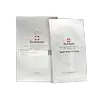What's inside
What's inside
 Key Ingredients
Key Ingredients

 Benefits
Benefits

 Concerns
Concerns

 Ingredients Side-by-side
Ingredients Side-by-side

Butylene Glycol
HumectantGlycerin
HumectantPropylene Glycol
HumectantGlyceryl Polymethacrylate
Betaine
HumectantBeta-Glucan
Skin Conditioning3-O-Ethyl Ascorbic Acid
Skin ConditioningSodium Hyaluronate
HumectantTranexamic Acid
AstringentSclerotium Gum
Emulsion StabilisingTremella Fuciformis Polysaccharide
Emulsion StabilisingHibiscus Abelmoschus Extract
MaskingHydroxyethylcellulose
Emulsion StabilisingXanthan Gum
EmulsifyingDipotassium Glycyrrhizate
HumectantPaeonia Suffruticosa Root Water
MaskingHexapeptide-1
Skin ConditioningOligopeptide-4
Skin ConditioningPentylene Glycol
Skin ConditioningCaprylhydroxamic Acid
Glyceryl Caprylate
EmollientButylene Glycol, Glycerin, Propylene Glycol, Glyceryl Polymethacrylate, Betaine, Beta-Glucan, 3-O-Ethyl Ascorbic Acid, Sodium Hyaluronate, Tranexamic Acid, Sclerotium Gum, Tremella Fuciformis Polysaccharide, Hibiscus Abelmoschus Extract, Hydroxyethylcellulose, Xanthan Gum, Dipotassium Glycyrrhizate, Paeonia Suffruticosa Root Water, Hexapeptide-1, Oligopeptide-4, Pentylene Glycol, Caprylhydroxamic Acid, Glyceryl Caprylate
Water
Skin ConditioningGlycerin
HumectantYeast
Skin ConditioningPropylene Glycol
HumectantDipropylene Glycol
HumectantGlycyrrhiza Uralensis Root Extract
Skin ConditioningTranexamic Acid
AstringentBetaine
HumectantAloe Barbadensis Leaf Juice
Skin ConditioningXanthan Gum
EmulsifyingPolysorbate 20
EmulsifyingDipotassium Glycyrrhizate
HumectantMethylparaben
PreservativePhenoxyethanol
PreservativeMalus Domestica Fruit Cell Culture Extract
Skin ConditioningDisodium EDTA
Ethylhexylglycerin
Skin ConditioningTriethylhexanoin
MaskingGlycyrrhiza Glabra Root Extract
BleachingDiphenyl Dimethicone
EmollientMentha Haplocalix Extract
MaskingPolyglyceryl-10 Myristate
Skin ConditioningWater, Glycerin, Yeast, Propylene Glycol, Dipropylene Glycol, Glycyrrhiza Uralensis Root Extract, Tranexamic Acid, Betaine, Aloe Barbadensis Leaf Juice, Xanthan Gum, Polysorbate 20, Dipotassium Glycyrrhizate, Methylparaben, Phenoxyethanol, Malus Domestica Fruit Cell Culture Extract, Disodium EDTA, Ethylhexylglycerin, Triethylhexanoin, Glycyrrhiza Glabra Root Extract, Diphenyl Dimethicone, Mentha Haplocalix Extract, Polyglyceryl-10 Myristate
Ingredients Explained
These ingredients are found in both products.
Ingredients higher up in an ingredient list are typically present in a larger amount.
Betaine is a common humectant (a substance that promotes retention of moisture). It's known to be gentle on the skin and can help balance hydration.
This ingredient is best for improving hydration and soothing irritated skin. Studies also show it helps even out skin tone.
Fun fact: Betaine is naturally created in the skin and body. The kind found within cosmetic products can be either plant-derived or synthetic.
Another name for betaine is trimethylglycine.
Learn more about BetaineDipotassium Glycyrrhizate comes from licorice root.
Extracts of licorice have demonstrated to have antibacterial, anti‐inflammatory, antiviral, antioxidant properties.
One component, glabridin, has extra potent antioxidant and soothing properties. It has also been found to block pigmentation from UVB rays in guinea pigs.
Licorice Root also contains a flavonoid. Flavonoids are a natural substance from in plants. Flavonoids also have antioxidant properties.
Another component, glycyrrhizin, has been found to have anti-inflammatory and antimicrobial benefits. This may make licorice root extract effective at treating acne. However, more research is needed to support this.
Liquiritin is one of the flavone compounds found in licorice. It has been found to help lighten skin by preventing tyrosinase from reacting with tyrosine. When the two react, protein is converted to melanin. Melanin is the substance in your body that gives your features pigmentation.
Licorice root is native to Southern Europe and Asia. It has been used in traditional Chinese medicine to help with respiratory issues.
Learn more about Dipotassium GlycyrrhizateGlycerin is already naturally found in your skin. It helps moisturize and protect your skin.
A study from 2016 found glycerin to be more effective as a humectant than AHAs and hyaluronic acid.
As a humectant, it helps the skin stay hydrated by pulling moisture to your skin. The low molecular weight of glycerin allows it to pull moisture into the deeper layers of your skin.
Hydrated skin improves your skin barrier; Your skin barrier helps protect against irritants and bacteria.
Glycerin has also been found to have antimicrobial and antiviral properties. Due to these properties, glycerin is often used in wound and burn treatments.
In cosmetics, glycerin is usually derived from plants such as soybean or palm. However, it can also be sourced from animals, such as tallow or animal fat.
This ingredient is organic, colorless, odorless, and non-toxic.
Glycerin is the name for this ingredient in American English. British English uses Glycerol/Glycerine.
Learn more about GlycerinPropylene Glycol is an odorless, colorless liquid. As a humectant, it helps skin retain moisture. It also aids in delivering active ingredients.
Another role of this ingredient is preventing a product from melting or freezing. Propylene glycol also adds antimicrobrial properties to a product, elongating product lifespan.
This ingredient is considered an organic alcohol and commonly added into both cosmetics and foods.
Those with sensitive skin or conditions may develop a rash when using this ingredient.
Learn more about Propylene GlycolTranexamic Acid is best used for treating hyperpigmentation, discoloration, and melasma. It can also help build a stronger skin barrier.
Once applied, Tranexamic Acid starts decreasing inflammation from UV exposure. Tranexamic Acid also prevents our skin cells from meeting the pigment production cells.
Its brightening property makes it great at reducing the appearance of acne scars and marks.
Fun fact: Tranexamic Acid is also a medication used to reduce heavy bleeding.
This acid is derived from lysine, an amino acid.
Learn more about Tranexamic AcidXanthan gum is used as a stabilizer and thickener within cosmetic products. It helps give products a sticky, thick feeling - preventing them from being too runny.
On the technical side of things, xanthan gum is a polysaccharide - a combination consisting of multiple sugar molecules bonded together.
Xanthan gum is a pretty common and great ingredient. It is a natural, non-toxic, non-irritating ingredient that is also commonly used in food products.
Learn more about Xanthan Gum